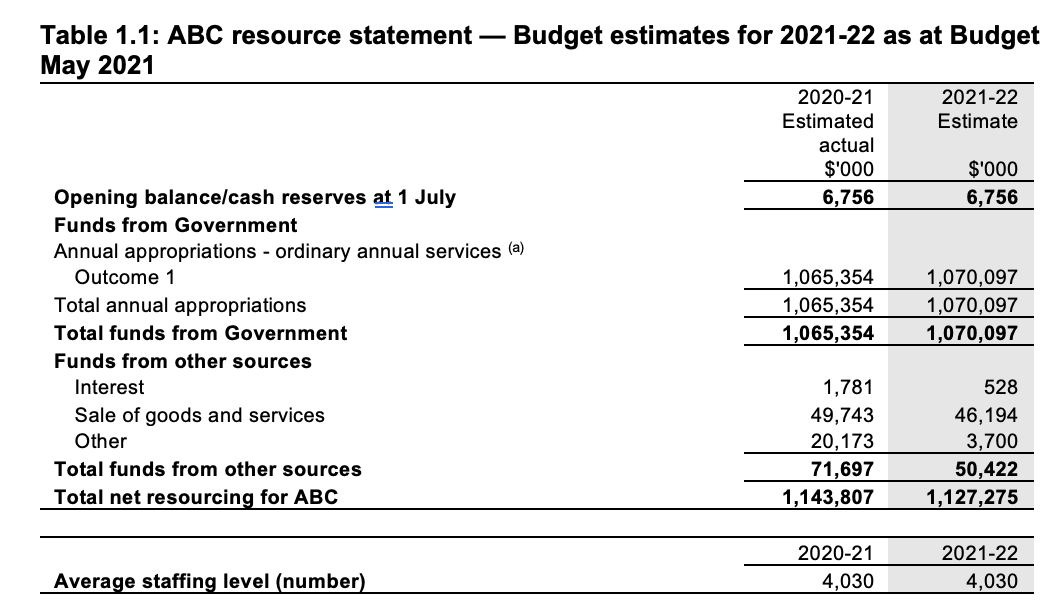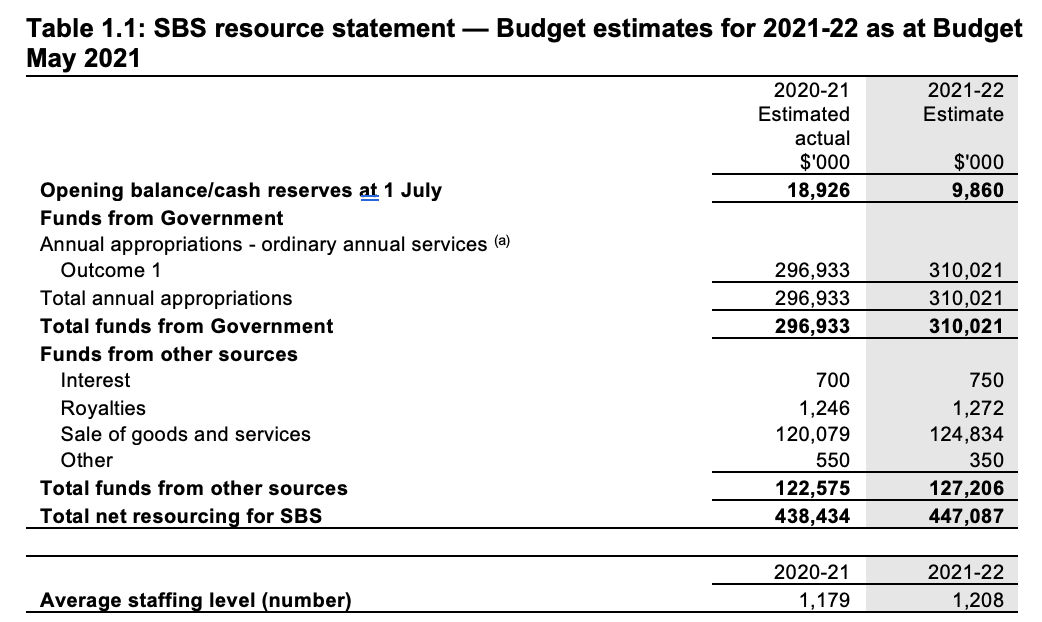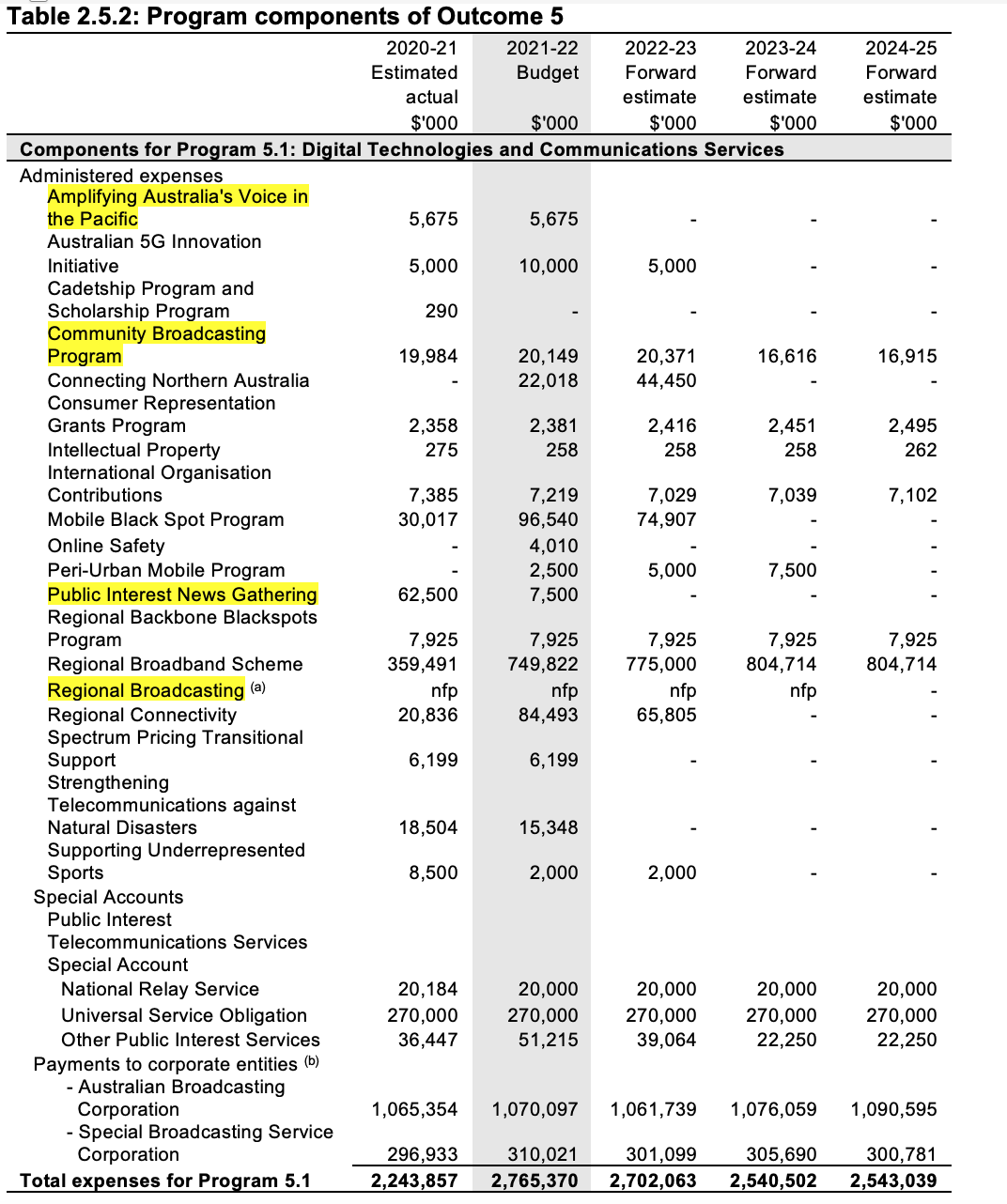Treasurer Josh Frydenberg has delivered the federal budget with a focus on “creating jobs and rebuilding the economy,” as Australia continues to recover from the covid pandemic and to keep it at a very low level compared with the rest of the world.
“Australia is coming back. In the face of a once‑in‑a‑century pandemic, the Australian spirit has shone through,” he told Parliament tonight in his budget speech.
“The COVID 19 recession will see our deficit reach $161 billion this year, falling to $57 billion in 2024‑25 [but]… We are better placed than nearly any other country to meet the economic challenges that lie ahead.”
For the ABC it will be largely business as usual in the coming financial year, after the difficult budgets of recent years. The SBS is steady. Community Broaadcasting has maintained its core funding and received some special extra funding. AFTRS and NFSA have had slight decreases in funding and the ACMA has had an increase in funding.
ABC
The ABC will receive slightly more government funding in this year’s federal budget and is expected to maintain its staffing level of 4,030 staff.
The budget portfolio statement shows that the national broadcaster will receive $1.07 billion from government, up from $1.06b last year, however the ABC expects a decrease in ‘funds from other sources’ which will be down to $50 million compared with $71 million last financial year. This will mean the national broadcaster will still need to find savings of about $15 million, which are expected to be brought to “break even” status by savings in the costs of delivering “ABC commercial activities,” according to the budget statement.

About $931 million (down from $933m) will be spent on program making and other operations expenses, while $191 million (up from $189m) will be spent on transmission and online distribution of video and audio content via the iView and ABC Listen app.
Just over $500 million will be paid to employees, about half of the national broadcaster’s operating costs, while about $465 will be paid to “suppliers,” including commissioned program production and contractor staff.
The ABC is guided by its Five-Year Plan and “is committed to maintaining its position as the nation’s most trusted source of news.” The national broadcaster “will place greater focus on being easier to access and experience on digital platforms and devices; it will seek to strengthen connections in local communities; will prioritise quality over quantity” and reflect the voices and experiences of Australians.
Responding to the budget, Friends of the ABC says: “With a seven-year history of neglect the Federal Government urgently needs to work with the ABC to establish priorities that can maintain and enhance its record of quality public broadcasting for all Australians.”
The forward estimates suggest further cuts may be imminent, according to ABC Alumni. The figures did not include continuation of the annual tied funding of $14.5m for the successful local and regional newsgathering operation that has strengthened rural coverage over the past eight years. A spokesperson for Communications Minister Paul Fletcher told ABC Alumni that this was omitted because the current three-year allocation of this funding had an ‘end date’ (2022), but no assurance was forthcoming that it will be renewed.
SBS
SBS will receive $310 million from government, up from $296m last financial year. It is budgeted to earn $124 million from advertising, slightly more than last year ($120m), resulting in overall operating resources of $447 million.
“Own-source of revenue [from advertising] is anticipated to remain relatively stable compared to 2020-21 estimated actual of $127.2 million, following a better than expected recovery in the Television and Digital advertising market during the global pandemic.”
Staffing is expected to increase slightly, up from 1179 staff last year to 1208 in the 2021-22 financial year.

SBS expects to exceed its 90% target percentage of radio broadcasts in languages other than English and more than 99% coverage across Australia. The national language broadcaster aims to have 10.2 million registrations to its digital services in the next financial year.
Community Broadcasting
The portfolio statements show that the allocation of funds from the Department of Communications for Community Broadcast funding will increase slightly from $19.9 million to $20.1m. Additional extra funding is also expected, as announced by the Minister in a statement on budget night:
“The Government will provide an additional $8 million over two years to the Community Broadcasting Foundation as part of the Community Broadcasting Program
“The community radio sector has made a valuable contribution to Australians throughout the 2019-20 Black Summer bushfires and COVID-19 pandemic. This additional support will help to boost development and operational funding, support sustainability and capability for the sector, and allow it to manage the ongoing economic impacts of the COVID-19 pandemic. Australia’s 450 community radio broadcasters will benefit from this measure.”
Support funding
The Public Interest News Gathering (PING) program will be phased out, decreasing from the $65 million spent this financial year to $7.5 million next financial, then nothing after that. Funds for the Regional Broadcasting scheme are not revealed in the budget for commercial sensitivity reasons.
“The Government will provide additional funding of $15 million over two years to the Australian Associated Press Newswire (AAP), starting in the 2020-21 financial year. The funding will support AAP’s continued provision of newswire services, consisting of regional, national and international news, to regional media outlets across Australia. This allows regional media businesses to concentrate on covering local news stories that are important to their communities.
“The funding is consistent with the objectives of the Public Interest News Gathering (PING) Program to support regional journalism and builds on the Government’s existing support to the newswire service. The measure will bring the total support to AAP to $20 million. AAP’s existing PING agreement will be updated to reflect the increase in funding and new grant activities. The first payment of $7.5 million will be paid before 30 June 2021.”

ACMA
Additional funding of $4.2 million over three years from 2020-21will be provided to the ACMA to enable the regulator to administer the News Media and Digital Platforms Mandatory Bargaining Code.
The regulator’s overall allocation will increase from $151 million to $171m in the next financial. $44.8 million will be spent on ACMA’s regulatory and planning functions and $43 million on consumer safeguards.
AFTRS
The Australian Film, Television and Radio School’s funding will decrease slightly to $22.7 million, down from $25m this year. Staff numbers will remain constant at 145 people.
AFTRS is the national institution for education, training and research for the screen and broadcast industries. “As a global centre of excellence, AFTRS embraces connection and exchange with its international partners; as the national school, AFTRS reflects all Australians and is accessible to all Australians.”
National Film & Sound Archive
NFSA’s allocation will decrease to $26.8 million, down from $30m last financial year. Part of its mission in the coming year will be the digitisation of more of its audio and video archive to make it more widely accessible. 25,000 audio visual collection items will be digitised.
The archive also plans to revitalise the NFSA’s program of high profile temporary exhibitions and work with Galleries, Libraries, Archives and Museums (GLAM) partners across Australia to ensure a nationally coordinated approach to collecting multimedia and new media.
Subscribe to the radioinfo podcast on these platforms: Acast, Apple iTunes Podcasts, Podtail, Spotify, Google Podcasts, TuneIn, or wherever you get your podcasts.





Two issues, ABC funding and the race to restore our nation's recorded history.
First, the article gives the impression that there is relief from further cuts after adjustment for inflation.
It's the calm before the fiscal storm. These budget documents are big. It looks like the calm before the fiscal storm.
If you thought that further budget cuts in real time are over, then according to "The Australian", https://www.theaustralian.com.au/business/media/budget-2021-freeze-ends-but-abc-sbs-face-cuts/news-story/62ae07d6579559de9963571beddaee7e there will be a 6% trim by 2024-2025.
Mention of ABC in "The Australian" attracts mostly negative comments, such as "cut the ABC by another 94%", "commercialise the ABC", "no more Q & A".
There may well be valid criticism of the ABC's programs and too many channels. There may well be a valid criticism of SBS's content which could well be accommodated into the ABC.
But don't expect "Sky News Australia" or commercial radio or TV: to send a reporter to India or places that are not in the UK or the US to fill a void by the absence of the ABC.
Furthermore, don't expect commercial TV to supply educational TV. It's been over 30 years since the science program "The Curiosity Show" on the Nine Network and Network 10's "Totally Wild" has recently been ditched.
Secondly, on the issue of cuts to the National Sound and Film Archive's budget, it's a bad decision. Our recorded history stored on film and magnetic tape may well be lost forever.
Film made in the late 1800s and early 1900s were made of a celluloid base that over time would vinegarize and the images and recorded optical sound is lost forever. Vinegarization refers to the conversion of the celluloid material into vinegar acid. Optical sound refers to the audio soundtrack recorded on the film. History is lost if the information recorded on film is not transferred to durable media.
Similarly video and sound recorded on magnetic material may be lost over time as the magnetic material becomes detached from the plastic base. This results in a loss of audio and video information. History is lost if the information recorded on tape is not transferred to durable media.
Then comes the issue of the machines originally used to record and playback the recorded material especially the machines used to record and playback video and audio on magnetic tape.
The various tape formats are not compatible especially in the method of recording the video and audio on tape. The 2" quad video tape, the 1" broadcast quality video tape, the 3/4" U-Matic video tape, the Betamax broadcast for ENG, the Betamax domestic and VHS.
Even if the recording medium is mechanically similar, does not mean the signal encoding/decoding is the same. For example the 1" format for broadcast is not the same as the 1" format used in schools (1970s), hospitals and industry. Similarly, the Betamax cassette used in broadcast had a different colour encoding system and operated at seven times the speed as the domestic Betamax machine. Even in VHS, the sound could be recorded on the top of the tape above the video signal or may also be encoded diagonally for Hi-Fi tracks.
The Betamax cassette is mechanically the same for Betamax broadcast and Betamax domestic but the signals are encoded differently. In addition, the Betamax broadcast machine ran at seven times the Betamax domestic machine.
Then the machines that recorded the audio and video information have been out of production replaced by digital forms of recording and storing audio and video information.
Consequently, there has to be a ready supply of machines and spare parts in order to transfer the recordings to a more durable medium.
Then there has to be the personnel with knowledge of the analogue technology to keep the machines in working order.
Thus it is imperative to provide the resources to preserve any vestige of our history, NOT cut.
Something to ponder: will there be the spare parts and machinery available in the future to playback the preserved audio and video?
Thank you,
Anthony of interesting and curious Belfield